#ReportWriting
Explore tagged Tumblr posts
Text
🚀 Master Advanced Report Writing & Communication Skills! 🚀
Want to take your report writing skills to the next level? Whether you’re new to report writing or looking to refine your expertise, this 5-day course will teach you how to craft compelling, purposeful business and technical reports that influence decision-making and drive action.
Why Attend? ✅ Learn advanced report writing techniques to structure clear, impactful reports ✅ Master the use of visual aids to enhance your findings and recommendations ✅ Develop skills to write tailored reports for diverse audiences ✅ Gain confidence in presenting data-backed conclusions and actionable recommendations ✅ Improve your communication skills to effectively engage and persuade readers
Course Highlights:
• Structure reports that meet audience expectations and drive results • Learn the 5-step report-writing process for efficiency and clarity • Create captivating introductions and conclusions to engage readers • Use visual aids like graphs, charts, and tables to clarify complex information • Apply advanced methodologies to ensure high-quality and actionable reports
🔗 Join the course now: Advance Report Writing & Communication Skills
#ReportWriting #BusinessWriting #CommunicationSkills #TechnicalWriting #VisualAids #DecisionMaking #CareerGrowth #ProfessionalDevelopment #BusinessSuccess
#ReportWriting#BusinessWriting#CommunicationSkills#TechnicalWriting#VisualAids#DecisionMaking#CareerGrowth#ProfessionalDevelopment#BusinessSuccess
0 notes
Text
CDRforAustralia.com: Partner for CDR Writing Services
Migrating to Australia as a skilled engineer is an exciting opportunity, but crafting a compelling Competency Demonstration Report (CDR) is often a daunting task. That’s where CDRforAustralia.com steps in. As a leading CDR writing service provider, we specialize in assisting engineers worldwide in successfully meeting the requirements of Engineers Australia (EA) and achieving their migration goals.

Why Choose CDR for Australia?
At CDRforAustralia.com, we understand the importance of creating a flawless CDR that reflects your skills, qualifications, and professional experience. Our website serves as a one-stop solution for engineers looking for professional guidance and support in preparing CDR reports that align with Engineers Australia’s strict guidelines.
With a user-friendly interface, our home page introduces visitors to our comprehensive range of services, the benefits of choosing our team, and valuable insights into the migration skills assessment process.
Services Offered by CDR for Australia
1. CDR Writing Services
Our expert writers craft customized and high-quality CDRs tailored to your engineering discipline. From creating Career Episodes to crafting a perfect Summary Statement and Continuing Professional Development (CPD), we ensure your report meets EA’s expectations.
2. CDR Review and Editing
Already prepared your CDR? Let our professionals review and polish your report to eliminate errors, enhance clarity, and ensure compliance with Engineers Australia’s standards.
3. Career Episode Writing
Highlighting your engineering accomplishments is crucial. Our team helps you write Career Episodes that effectively demonstrate your technical skills, problem-solving abilities, and contributions to engineering projects.
4. Summary Statement Preparation
Struggling to map your competencies to Engineers Australia’s standards? We create precise and accurate Summary Statements that showcase your expertise in line with the ANZSCO codes.
5. CPD Writing
Continuing Professional Development (CPD) is a vital part of your CDR. Our experts prepare well-structured CPD lists, ensuring you demonstrate your commitment to lifelong learning.
6. CDR Rejection Assistance
If your CDR has been rejected, don’t worry. We provide comprehensive assistance to address the shortcomings and help you resubmit a stronger, more compelling application.
10+1 CDR Rejection Reasons by Engineers Australia
Our Commitment to Excellence
At CDRforAustralia.com, we pride ourselves on delivering personalized, plagiarism-free, and high-quality reports that significantly improve your chances of approval. Our experienced writers have in-depth knowledge of Engineers Australia’s guidelines and are dedicated to helping you achieve your dream of migrating to Australia.
Whether you’re an aspiring engineer or need assistance with resubmission, trust CDRforAustralia.com to provide the expertise and support you need to succeed. Visit our website today to learn more about our services and start your journey toward a rewarding engineering career in Australia!
For more details
Call or WhatsApp : +61 482 081 740
Email: [email protected]
Visit our website: CDR for Australia
#cdr#cdr for australia#cdr australia#cdrforaustralia#cdr report#reportwriting#engineers#engineer australia
1 note
·
View note
Text
Understanding the Importance of Routine Reports in Stakeholder Communication
Report proposal : Key Questions Explained
1.What is a routine report?
A routine report is a regular, scheduled document that provides updates on specific information or activities within an organization. It often includes data analysis, performance metrics, and progress reports. These reports help management and stakeholders monitor ongoing operations, track goals, and make informed decisions based on consistent and timely information. Examples include weekly sales reports or monthly financial summaries.
2. What is a report attribute?
A report attribute is a specific characteristic or property of a report that defines its content or format. This can include elements like titles, headings, data fields, filters, and layout styles. Attributes help organize and present information clearly, making it easier for users to understand and analyses the data within the report.
3. What is a daily report?
A daily report is a document summarizing the key activities, progress, and performance of a team or project over a 24-hour period. It typically includes updates on tasks completed, challenges faced, and plans for the next day, helping stakeholders stay informed and aligned on objectives. Daily reports are often used in business, project management, and team settings.
4. What is a periodic report?
A periodic report is a document that provides updates on specific activities, performance, or progress over a set time frame, such as weekly, monthly, or quarterly. It is used to inform stakeholders, facilitate decision-making, and track goals or objectives. These reports can cover financial data, project status, or operational metrics, depending on the context and audience.
5. What is an official report?
An official report is a formal document that presents information, findings, or recommendations on a specific topic, often produced by a government agency, organization, or committee. It is typically structured, well-researched, and aims to inform decision-makers or the public. Official reports can cover various areas, including investigations, assessments, and policy evaluations.
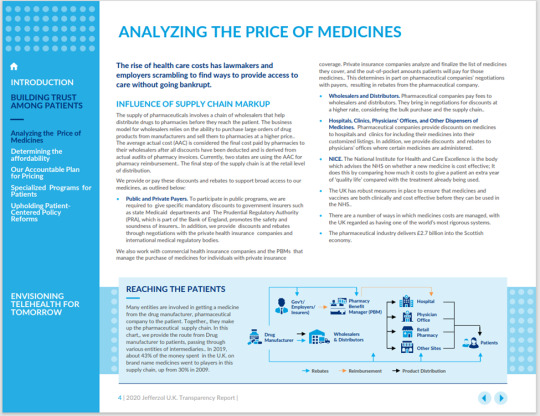
Visit: VS Website See: VS Portfolio
0 notes
Text
Mastering Report Writing in Psychological Assessment: A Comprehensive Guide

In the field of psychology, effective communication of assessment results is crucial. A well-crafted report writing psychological assessment is not only conveys the findings but also provides valuable insights that can guide treatment and intervention. Whether you are a seasoned psychologist or a student just starting out, mastering the art of report writing is essential for your professional practice. In this blog, we’ll explore the key components of a psychological assessment report, tips for writing effectively, and common pitfalls to avoid.
1. Understanding the Purpose
The primary purpose of a psychological assessment report is to document the results of an evaluation in a clear and structured manner. This document serves multiple functions:
- Communication: It communicates findings to clients, caregivers, or other professionals involved in the individual's care.
- Guidance: It provides actionable recommendations based on the assessment, aiding in treatment planning.
- Documentation: It offers a record of the assessment process and outcomes, which can be important for legal and administrative purposes.
2. Key Components of a Psychological Assessment Report
A comprehensive psychological assessment report typically includes several key sections:
- Introduction: This section provides context for the assessment. It includes the purpose of the evaluation, relevant background information about the client, and any referral questions.
- Assessment Methods: Here, you describe the tools and techniques used during the assessment. This might include standardized tests, observational methods, interviews, and other assessment tools. It's important to be transparent about why these methods were chosen and how they were administered.
- Results: This section presents the findings from the assessment. It should include a clear and objective summary of the data, often supported by charts or tables. Avoid jargon and make sure the information is accessible to readers who may not have a psychological background.
- Interpretation: In this part, you analyze the results and provide insights into what they mean. This is where you connect the data to the client's issues and concerns. Interpretations should be based on empirical evidence and align with established psychological theories.
- Recommendations: Based on the assessment, this section offers actionable suggestions. Recommendations might include therapeutic interventions, further assessments, or referrals to other specialists. They should be specific, practical, and tailored to the client's needs.
- Conclusion: Summarize the key findings and reiterate any important recommendations. This section can also address any limitations of the assessment and suggest next steps.
3. Tips for Effective Report Writing
- Clarity and Precision: Use clear, concise language to ensure that your report is easily understood. Avoid overly technical terms unless necessary, and when you use them, provide definitions or explanations.
- Objectivity: Maintain an objective tone throughout the report. Base your interpretations and recommendations on the data collected, and avoid letting personal opinions influence the content.
- Structure and Organization: Follow a logical structure and use headings and subheadings to organize the report. This helps readers navigate through the document and locate relevant information quickly.
- Tailoring the Report: Customize the report to the audience. For example, a report intended for a client might use less technical language and focus more on practical recommendations, while a report for a professional audience might include more detailed data and technical analysis.
- Proofreading and Editing: Review your report thoroughly to correct any grammatical errors or inconsistencies. A well-edited report enhances professionalism and credibility.
4. Common Pitfalls to Avoid
- Overloading with Jargon: Using excessive technical language can make the report difficult to understand. Aim for simplicity and clarity to ensure the report is accessible to all readers.
- Lack of Structure: A poorly organized report can be confusing and less impactful. Stick to a clear structure to present your findings logically.
- Ignoring Client Context: Failing to consider the client’s background and context can lead to incomplete or inaccurate recommendations. Always integrate contextual information into your analysis.
- Overgeneralizing: Avoid making broad, unsupported statements. Base your conclusions on the data and provide specific examples to support your interpretations.
Conclusion
Effective report writing psychological assessment is a vital skill that enhances communication, guides decision-making, and supports client care. By focusing on clarity, objectivity, and quality, you can produce reports that are not only informative but also effective. Remember, a well-written report can make a significant difference in the outcome of psychological assessments, helping to ensure that clients receive the most appropriate and effective care.
1 note
·
View note
Link
🖋️📚 As educators, we understand the importance of effective communication, especially when it comes to reporting on our students' progress. Writing school reports is an art that requires precision, empathy, and a deep understanding of each student's unique journey. In our latest blog post at Impact Teachers (https://impactteachers.com/blog/writing-reports/), we delve into the intricacies of writing comprehensive and meaningful school reports. We explore the importance of clear language, the balance between praise and constructive feedback, and how to accurately reflect a student's progress. Whether you're a seasoned educator or a newly qualified teacher, this guide offers valuable insights into crafting reports that not only inform parents but also inspire students to reach their full potential. Remember, a well-written report can be a powerful tool in fostering positive relationships between teachers, students, and parents. It's not just about grades; it's about growth, development, and celebrating every step of the learning journey. So why not take a moment to read our blog post? You might discover new strategies to make your next round of report writing more efficient and impactful. After all, as educators, we're lifelong learners too. 🎓✍️
0 notes
Link
📚✍️ Writing school reports can often seem like a daunting task. It's not just about summarising a student's academic progress, but also about providing constructive feedback and setting clear goals for future development. At the heart of every report is the understanding that each child is unique, with their own strengths and areas for improvement. It's our responsibility as educators to communicate this effectively to parents, who are eager to understand their child's journey in the world of learning. But where do we start? How do we ensure that our reports are comprehensive, yet concise? How do we strike a balance between being honest and encouraging? The answer lies in understanding the art of report writing. It's about being objective, yet empathetic. It's about being detailed, yet succinct. It's about being professional, yet personal. If you're looking for guidance on how to write effective school reports, look no further! Impact Teachers has put together an insightful blog post that provides practical tips and strategies on writing school reports. From understanding the purpose of reports to structuring them effectively, this blog post covers it all! So whether you're a seasoned educator or a novice teacher, this blog post is sure to equip you with the skills needed to write impactful school reports. Check out the blog post here: https://impactteachers.com/blog/writing-reports/ Remember, writing school reports is not just about ticking off a task on your to-do list. It's an opportunity to make a difference in a child's educational journey. So let's embrace this opportunity and make every word count!
0 notes
Text
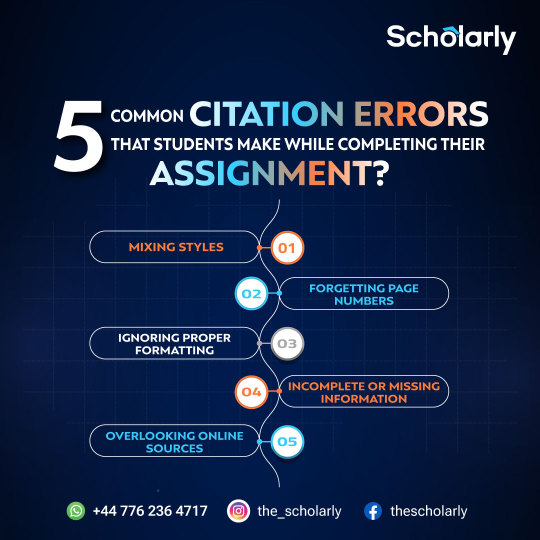
Citation plays a crucial role in writing, ensuring that your coursework gives proper credit to references and adheres to the appropriate style for presenting ideas clearly and academically sound. Below are common errors that students often make when completing their assignments:
Mixing Styles: Are you using MLA in an APA-dominated world? Stay vigilant! Choose one citation style and maintain consistency throughout your assignment. Consistency is key!
Forgetting Page Numbers: Page numbers are important! When quoting or paraphrasing, always include the page number. This not only adds credibility to your work but also helps your reader locate the source. Don't let those crucial digits slip away!
Ignoring Proper Formatting: Formatting is as important as the content itself. Double-check margins, font sizes, and spacing according to your citation style. An aesthetically pleasing paper is a step closer to that A+!
Incomplete or Missing Information: Ever cited a source and later realized it lacks vital details? Always ensure you have all the necessary information: author's name, publication date, title, and publisher. An incomplete citation is like a puzzle missing pieces!
Overlooking Online Sources: Internet treasures come with their own citation rules. Include URLs, access dates, and clearly indicate the online source's reliability. Navigate the digital world of citations with finesse!
5 Common Citation Errors that Students Make While Completing Their Assignment?
#citationtips#academicsuccess#commonmistakes#writing#academicwriting#studenttip#success#essay#essaywriting#thesis#thesiswriting#report#reportwriting#dissertation#assignments#internationalstudents#mastersdissertation#assignmentwriting#assignment#assignmenthelp#thescholarly#scholarly#uk
0 notes
Text
How to Write an Executive Summary
Understanding the Role of an Executive Summary
An executive summary is a vital component of various business documents, proposals, and reports. It's a concise yet comprehensive overview of the main points, findings, and recommendations contained in a more extensive document. Whether you're writing a business plan, a research report, or a proposal, mastering the art of creating an effective executive summary is essential. In this article, we'll explore the step-by-step process to write an engaging and informative executive summary.
Understanding the Purpose
Before we dive into the process, let's clarify the purpose of an executive summary. It serves several critical functions:
Concise Communication: It condenses complex information into a manageable format, allowing readers to quickly grasp the main ideas.
Decision-Making: It provides key information for decision-makers, enabling them to decide whether they need to read the full document.
Overview: It offers a comprehensive perspective on the document's content, helping readers understand the document's scope and primary focus.
Accessibility: It can be used as a standalone document, separate from the full report, making it easy to distribute and share with a broader audience.
Now, let's explore the steps to write an effective executive summary.
Step 1: Understand Your Audience
Begin by identifying your target audience and their specific needs. Tailor the executive summary to address the concerns and interests of your readers. Consider what information they prioritize and how they plan to use it. Knowing your audience is the first key to creating a compelling executive summary.
Step 2: Read the Full Document
Before you start writing, read the entire report, proposal, or plan. Understand the main findings, key recommendations, and supporting evidence. This step is crucial because it helps you select the most critical information to include in the summary. The executive summary should encapsulate the essence of the complete document.
Step 3: Identify Key Points
Identify the most important points in the document. These might include the main findings, conclusions, recommendations, and any data or evidence that supports them. Focus on the essentials; avoid unnecessary details. Keep in mind that the executive summary is not a miniaturized version of the full document but rather a snapshot of the most significant elements.
Step 4: Use a Clear Structure
An effective executive summary typically follows a clear structure, making it easier for readers to navigate. A common structure includes:
Introduction: Provide a brief introduction to the document's purpose and scope. Set the stage for what the readers can expect.
Main Findings: Highlight the most critical findings or results. Be succinct but clear in your presentation.
Key Recommendations: Summarize the main recommendations or actions to be taken based on the findings. Explain why these recommendations are crucial.
Supporting Evidence: Include essential data, statistics, or evidence that underpin your findings and recommendations. Use graphs, charts, or tables when appropriate.
Conclusion: Provide a brief conclusion or call to action. Restate the significance of your findings and recommendations.
Step 5: Write Succinctly
Keep your writing clear and concise. Use simple, straightforward language. Avoid jargon or technical terms that might confuse the reader. Each sentence should be sharp and to the point. Aim for brevity without sacrificing clarity.
Step 6: Use Bullet Points and Headings
Break down information into bullet points, headings, and subheadings to make it easier for readers to scan the content. Use formatting elements like bold text or italics to emphasize important points. Visual cues help draw attention to key information.
Step 7: Revise and Edit
After drafting the executive summary, take the time to revise and edit it carefully. Eliminate any unnecessary words, sentences, or redundant information. Check for grammar and spelling errors. Ensure that the summary flows smoothly and logically.
Step 8: Seek Feedback
Don't hesitate to share your executive summary with colleagues, mentors, or peers for feedback. Fresh eyes can provide valuable insights and catch any overlooked mistakes or opportunities for improvement.
Conclusion
Writing an effective executive summary is an art that can significantly enhance your ability to communicate essential information to your audience. By understanding your readers, selecting key points, and structuring your summary logically, you can create a powerful tool for decision-makers. Practice and continuous improvement will help you perfect this critical skill in business and professional writing.
#ExecutiveSummary#BusinessWriting#ReportWriting#ProfessionalCommunication#WritingTips#EffectiveCommunication#SummaryWriting#ProposalWriting#WritingSkills#BusinessCommunication#DocumentStructure#CommunicationSkills#BrevityMatters#ClarityInWriting#DocumentPreparation
0 notes
Text
Understanding the Format of Writing a Report
Reports are an essential form of written communication in various fields, ranging from business and academia to government and research. They serve the purpose of conveying information, analyzing data, and presenting findings in a structured and organized manner. The format of a report is crucial to ensure clarity, coherence, and effectiveness in delivering the intended message. In this comprehensive guide, we will explore the key elements and structure of writing a report.

Purpose of a Report
Before delving into the format, it's essential to understand the primary purpose of a report. Reports are created to:
Inform: Reports provide information about a particular subject or topic. They aim to inform the reader, presenting facts, data, and analysis.
Analyze: Many reports involve the analysis of data or situations. They go beyond mere information and offer insights, interpretations, and conclusions.
Recommend: In some cases, reports include recommendations based on the analysis. These suggestions are meant to guide decision-making.
Record: Reports can serve as a record of events, research, or activities. They provide a documented account for future reference.
Elements of a Report
A well-structured report typically consists of the following elements:
1. Title Page
The title page is the first page of your report and should include the following information:
Title of the Report
Author's Name
Date of Submission
Name of the Organization or Institution (if applicable)
2. Table of Contents
For longer reports, include a table of contents that outlines the sections and subsections along with their page numbers. This helps the reader navigate the report efficiently.
3. Executive Summary
The executive summary provides a concise overview of the report's main points, findings, and recommendations. It is usually a separate section and is meant to give busy readers a quick understanding of the report's content.
4. Introduction
The introduction sets the stage for the report by introducing the topic, providing background information, and stating the purpose and scope of the report. It should engage the reader's interest and provide context.
5. Methodology
In research or technical reports, a methodology section describes the methods and procedures used to collect and analyze data. It ensures transparency and allows readers to assess the reliability of the findings.
6. Main Body
The main body of the report is where you present the information, analysis, and findings in a logical and organized manner. It should be divided into sections and subsections, each with a clear heading. Use headings and subheadings to make the content easily navigable.
Discussion: This section elaborates on the topic, presents data, and provides analysis. It should answer the key questions posed in the report's introduction.
Findings: Present your research findings, data, or evidence here. Use tables, charts, and graphs to support your points.
Analysis: Discuss and interpret the findings. What do the data or facts mean? Are there patterns or trends worth noting?
7. Conclusion
The conclusion summarizes the main points, findings, and their implications. It should tie back to the report's objectives and provide closure to the reader.
8. Recommendations
If applicable, offer recommendations based on the report's findings and analysis. These suggestions should be actionable and address the issues discussed in the report.
9. References
List all the sources, references, and citations used in the report. Follow a specific citation style (e.g., APA, MLA) as required.
10. Appendices
Include any supplementary material, such as raw data, additional charts, or detailed explanations, in the appendices. Use appendices for content that is essential but not suitable for the main body of the report.
Writing Style and Formatting
When writing a report, consider the following writing style and formatting guidelines:
Use clear and concise language.
Be objective and avoid biased language.
Use appropriate headings and subheadings for organization.
Use a consistent font and formatting style throughout the report.
Proofread and edit for grammar, spelling, and punctuation errors.
Use visual aids (charts, graphs, tables) to support your points.
Include page numbers for easy reference.
Final Thoughts
Understanding the format of writing a report is crucial for effective communication in various professional and academic settings. By following these guidelines and structuring your report with clarity and precision, you can ensure that your message is conveyed effectively and your readers gain valuable insights from your work. Remember that each report may have specific requirements or variations in format, so always check the guidelines provided by your institution or organization.
#writing#reportwriting#whatisreportwriting#reportwritingformat#reportwritingservices#writingservices
0 notes
Text
MATLAB Assignment Help Assistance
The MATLAB Assignment Help process involves a student paying a Programming Service Provider for their time and labor.
Our MATLAB assignment assistance experts are proficient. Our MATLAB assignment service programmers generate high-quality, easy-to-remember code.
MATLAB's scratch technique creates plagiarism-free, well-documented code. Our MATLAB assignment help experts work hard to accomplish each assignment. They follow every student assignment instruction to help youngsters achieve.
The multi-paradigm numerical computation environment of the fourth-generation computer language MATLAB is Matrix Laboratory. MATLAB was invented by Mathworks Inc. for numerical computation.
The optional MuPAD symbolic engine toolbox lets this programme access symbolic calculations. Our India-based Matlab assignment help experts also teach you about Simulink, MATLAB's multi-domain simulation design tool for embedded and dynamic systems. Matlab assignment assistance is available for writing concerns.
Our MATLAB assignment help is available. MATLAB assignments can be submitted by clicking "Order Now". Contact our support staff to speak with our MATLAB specialists.
Single Tutor's top computational mathematics (numerical computing), method development, system modelling and simulation, and Graphical User Interface experts can help with MATLAB assignments.
Experts in Matlab Assignment have PhDs in data analysis, signal processing, communication systems, image processing, control systems, parallel computing, network design, embedded systems, and mathematics.
Our MATLAB Experts provide Project and Assignment Help for the following engineering, scientific, and statistics subjects:
Computer modelling and computation
Synthesis and Development of Algorithms
Prototype testing simulated.
data exploration, analysis, visualisation
employing graphical analysis in science, engineering, and tech.
GUI development for user-end apps
Application and GUI development.
Our assignment help professionals say MATLAB employs several data types and classes when programming. Important data types or matrices include floating-point arrays, characters, strings, numeric data, and logical true and false states.
In MATLAB, 16 fundamental classes are arrays or matrices. The following categories are essential class examples from our assignment help pros.
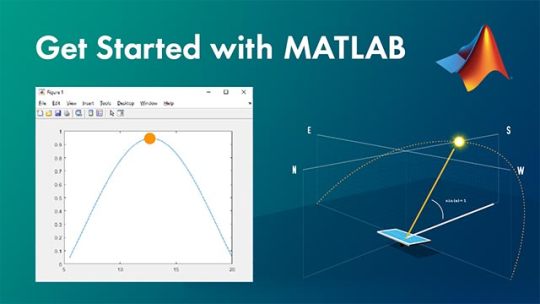
Academic importance of MATLAB Our Matlab assignment help shows the benefits of knowing it. Students from around the world utilise MATLAB most. Student backgrounds include mechanical, electrical, electronic, and communication engineering, information technology, science, and economics.
In Control Engineering, MATLAB programming is more advanced for numerical data processing.
MATLAB helps with matrix manipulation, algorithm integration, graphing functions and data, etc.
MATLAB interfaces C, C++, Java, COBOL, Python, and FORTRAN programmes.
Used in teaching, especially in difficult subjects like numerical analysis, linear algebra, image processing, etc. The issue is just briefly covered here. Use our MATLAB homework help to improve your marks.
#dissertation#essay writing#research paper#thesis#case study help#homework help#report#reportwriting#matlab
0 notes
Text
Elevate Your Grades With Our Expert Assistance In Assignment Writing, Exclusively In The UK
#AssignmentWriting#OnlineAssignment#ThesisHelp#ReportWriting#CaseStudyHelp#DissertationHelp#MyAssignmentsHelpUK
0 notes
Text
Mastering Report Analysis: A Methodical Approach to Understanding Structure and Purpose
Report proposal: Common Questions Answered
1.How to analyse the report?
To analyze a report, start by reading it thoroughly to understand its purpose. Identify key sections such as the introduction, findings, and conclusions. Highlight important data and trends and take notes on any significant points. Consider the methodology used and any biases. Summarize the main insights and implications and compare them with other relevant information or reports for context.
2. What are the two aims of report writing?
The two aims of report writing are to inform and to analyses. Informing involves presenting factual data and findings clearly for the reader's understanding. Analysing involves interpreting the information, drawing conclusions, and making recommendations based on the data to guide decision-making or further action. Both aims work together to provide a comprehensive overview of the subject matter.
3. What is classified as a report?
A report is a structured document that presents information, findings, or analysis on a specific topic. It typically includes an introduction, body, and conclusion, along with data or evidence to support its claims. Reports can vary in purpose and format, such as research reports, business reports, or technical reports, and are often used to inform decision-making.
4. How to do a business proposal?
To create a business proposal, start with a title page and an executive summary. Outline the problem, your proposed solution, and the benefits. Include a market analysis, marketing strategy, and financial projections. Detail the implementation plan and conclude with a call to action. Ensure clarity and professionalism throughout, and tailor the proposal to your audience's needs.
5. What are the principles of report writing?
The principles of report writing include clarity, conciseness, and coherence. Reports should have a clear structure, including an introduction, body, and conclusion. Use straightforward language, support claims with evidence, and maintain objectivity. Proper formatting and citations are essential for credibility. Tailor the content to the audience's needs and ensure thorough proofreading for accuracy and professionalism.
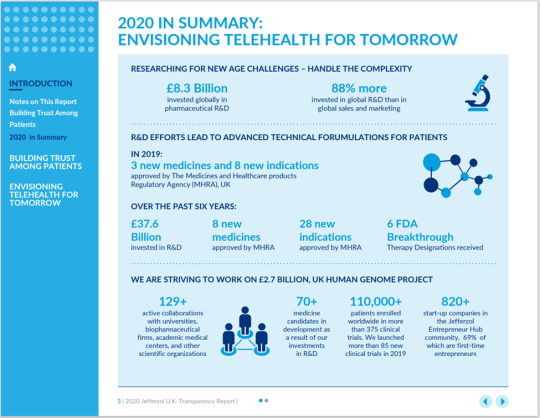
Visit: VS Website See: VS Portfolio
0 notes
Video
Workday Reporting: A Step-by-Step Tutorial for Beginners Part 14|Technosoft
0 notes
Text
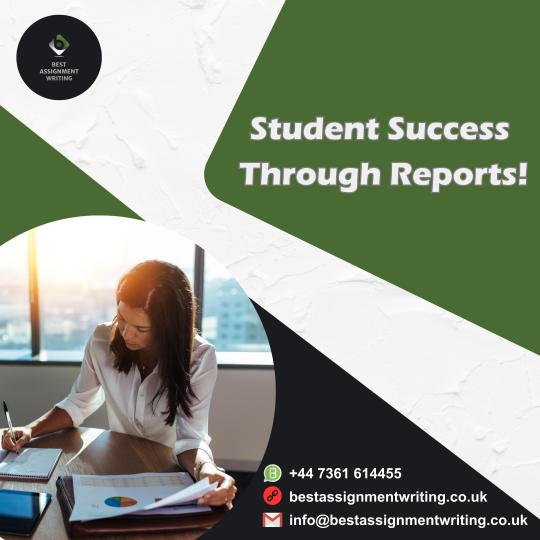
Discover the Scientific Basis of Impactful Reports!
Our skilled team provides full assistance with every aspect of your report writing, from research to compelling storytelling. Get outstanding assistance to succeed academically in your studies with us. For more details, contact our experts and also visit our website link are given below!
#Bestassignmentwriting#reportwriting#assignments#thesis#assignment#assignmenthelp#dissertation#essaywriting#projects#reportage#writing#researchpaper#dissertationhelp#studenthelp#plagiarism#dissertations#contentwriting#essaywritingservice#report#presentations#quiz#education#academichelp#university#studentlife#exam#researchpapers#presentation
1 note
·
View note
Text

Our report writing services create words into captivating narratives, from the ordinary to the magnetic. Make an amazing impression by standing out from the competition!
#bestessaywriter#reportwritingservices#reportwritingservice#reportwriting#reportwritingassignmenthelp#reportwritinghelp#reportwritingsucks#reportwritingskills#reportwritingdone#assignments#assignmenthelp#writing#academichelp#university#studentlife#proposal
0 notes